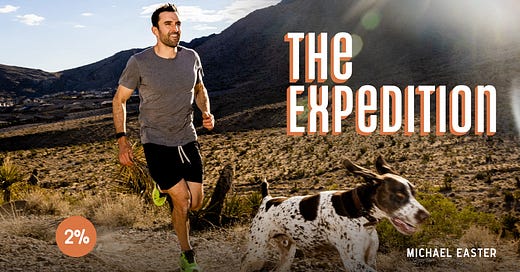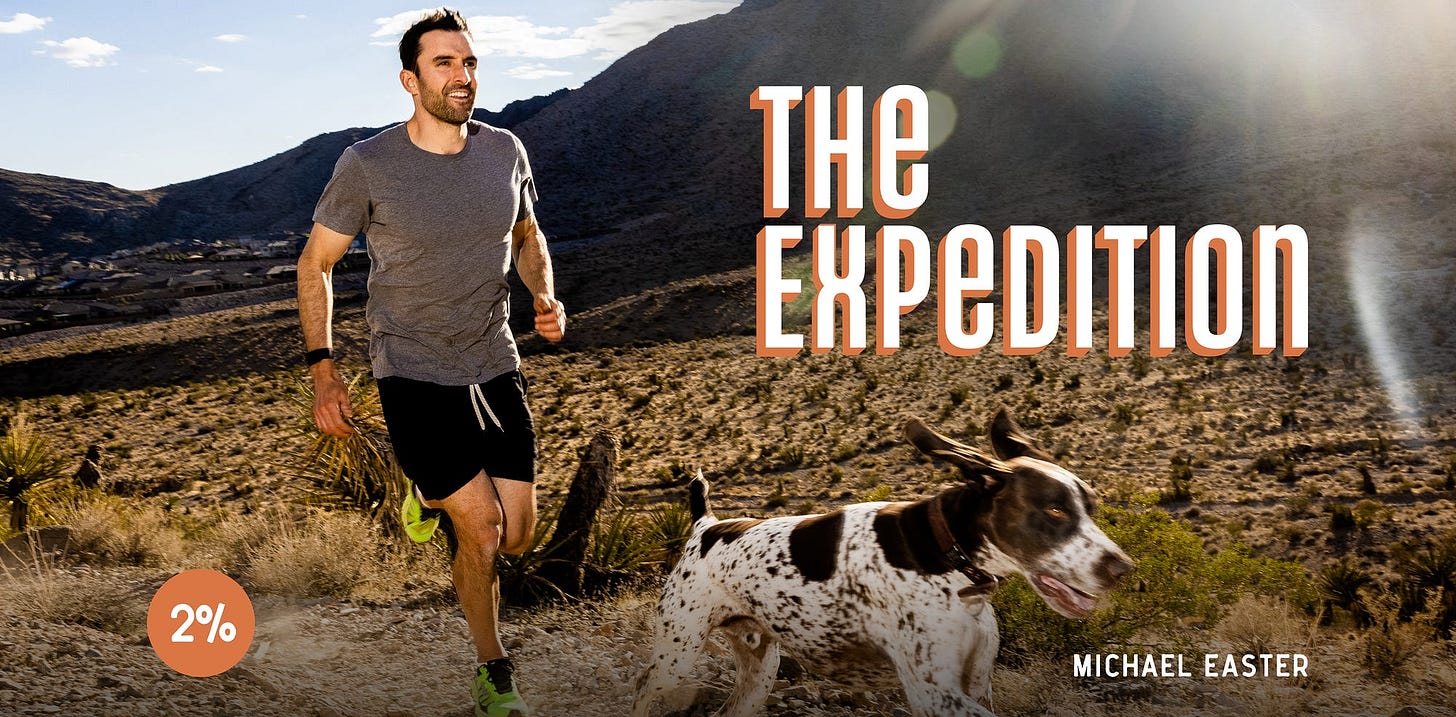The Expedition: March Edition
The best exercise for improving mental health, scary plastics data, a good book, how far you should be able to walk, lessons on rucking from the Imperial Japanese Army, and more.
Housekeeping:
Full access to this post is for Members. Become a Member below to get the entire post and its audio reading.
Onto today’s post: The Expedition
This monthly series is a journey into thoughts, opinions, ideas, observations, studies, facts, figures, etc. Good ones, bad ones, insightful ones, dumb ones, and ones you can use to live better.
It’s a roundup of all the worthwhile stuff I’ve encountered in the last month. It’s a bit of an island of misfit toys. But, hey, the greatest journeys are winding.
This month, we’re covering:
A good book I read
Numbers on:
The state of the world.
How to age durably.
How sleep impacts athletic injuries.
Scary new stats on plastic.
The odds that you have heart disease right now based on your age group.
The number of miles you should be able to walk in 20 hours.
A giant finding on what specific exercise is best for mental health—beating depression and anxiety and improving happiness.
How elite versus amateur athletes use fitness trackers, and how that can inform our use.
Rucking lessons from the Imperial Japanese Army (and their wild rucks).
A chart explaining how to embrace discomfort and be a better human.
Two types of exercise I’m doing a lot of and why.
A lesson in having fun and (probably) not dying.
A good quote and an critical question for you.
A book I read: But What If We’re Wrong?
I like to hear and read Chuck Klosterman think. And that’s pretty much what this book is: Klosterman thinking.
He writes about how our many of our most universally accepted cultural and scientific beliefs will some day be considered wrong. Totally wrong. For example, scientists are currently rethinking big ideas like gravity and much more.
He also explores how future events alter how we view ideas and works of the past. For example, the book Moby Dick was a total flop when it was released. It signaled Melville’s demise as a writer, and he eventually became a customs inspector and died relatively unknown.
Then WWI happened. The themes in the book became hyper-relevant in a time of great war. A scholar, quite randomly, happened upon it and wrote of its relevance—setting the book on course to become the great American novel.
Klosterman grapples with fun questions like, “What band or individual will ‘stand’ for rock and roll in the future?” What (probably unknown) book or author will eventually be considered the great of our era? Are we living in a simulation? And much more.
By the numbers
96
Percent of children born today who survive the first five years of their life.
In 1820, that figure was 57 percent, meaning 43 percent of children died before age five.
75
Percent of people globally who live in poverty, earning between $2 and $30 a day. The poverty threshold is $30 a day, or roughly $11,000 a year. In the US, the average daily income is $75.
Roughly 15 percent don’t live in poverty and 9 percent live in extreme poverty, which is less than $2 a day.
1.2
Percentage of muscle improvement among elderly people for every one hour reduction of their sedentary time. Muscle becomes even more important as you age:
It can help you function better and accomplish day-to-day tasks without help.
It can help you weather diseases.
It can protect you if you fall.
TL;DR: Be more active (or maintain your activity) as you age.
2.35
Times more likely you are to sustain an athletic injury if you sleep four hours versus eight.
4.5
That’s the number of times more likely people who had higher levels of microplastics and nanoplastics in their body were to have a major adverse health events. Here’s how the journal Nature explained it:
A study of more than 200 people undergoing surgery found that nearly 60% had microplastics or even smaller nanoplastics in a main artery. Those who did were 4.5 times more likely to experience a heart attack, a stroke or death in the approximately 34 months after the surgery than were those whose arteries were plastic-free.
This is an early but worthwhile study. We’ll be tracking it, but it suggests we may want to limit plastic use. More to come.
17
Times greater the suicide rate is among older men compared to women.
60
Is the percentage of adults between the ages of 30 to 39 showing early signs of heart disease.
The figure is 37 percent for 20 to 29 year olds, 71 percent for 40-49 year olds, and 85 percent for people over age 50.
This doesn’t mean you’ll die from heart disease. Here’s a way to fight back.
50
Is the number of miles that 26th President Teddy Roosevelt demanded soldiers be able to walk in 20 hours.
What exercise helps boost happiness most?
Scientists in Australia looked at 218 studies on how exercise compares to an SSRI for treating depression. They then ranked the exercises.
Twelve different forms of exercise beat SSRI medications in treating depression.
But one reigned supreme. And by a significant margin.




